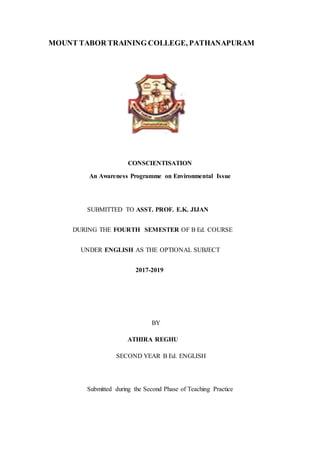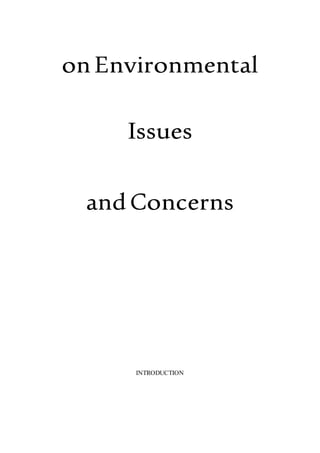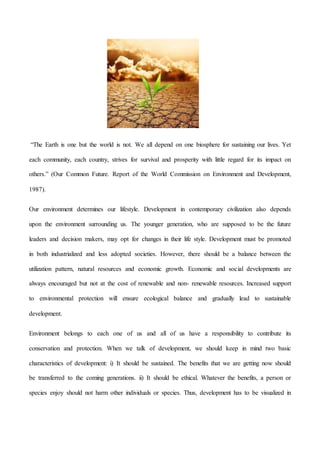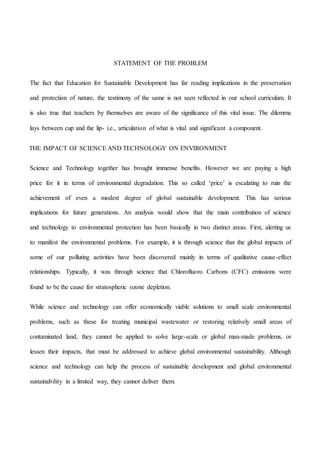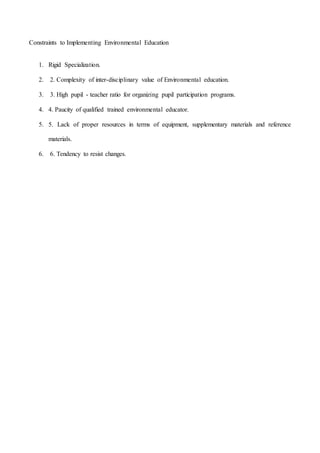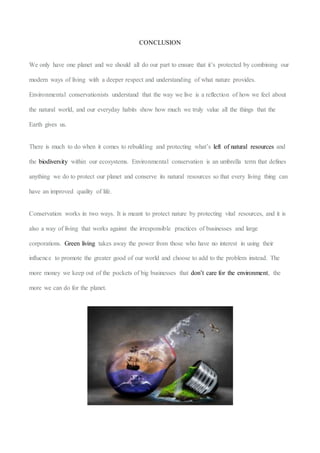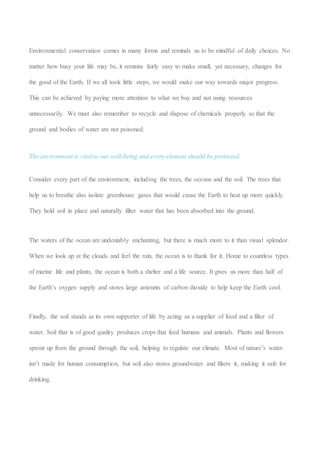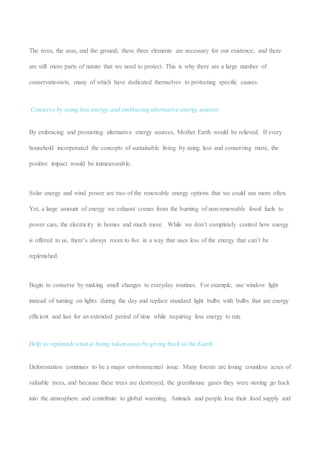1) The document discusses the need for environmental education and sustainable development to be integrated into school curriculums.
2) It notes that while science and technology have benefits, they have also contributed to environmental degradation without sustainable practices.
3) The document argues that education must motivate active participation in problem solving, discuss the social and moral impacts of environmental actions, and help students understand the consequences of human manipulation of the environment.
